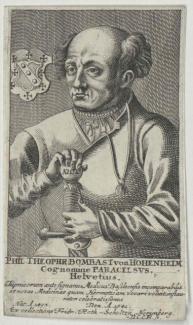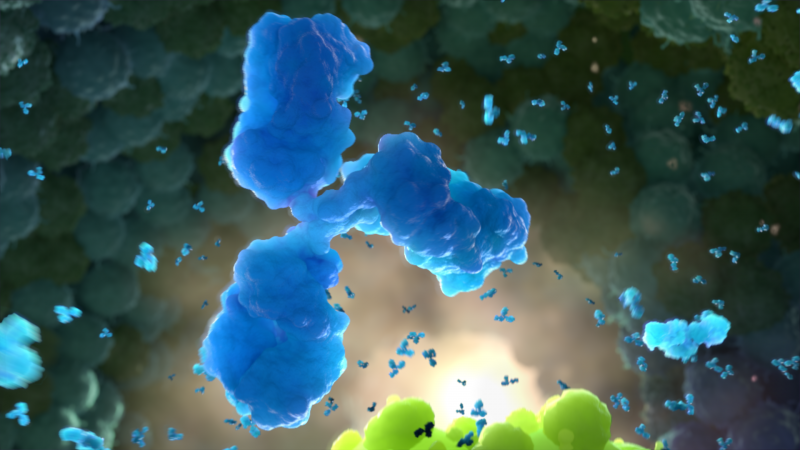Spotlight on: “The dose makes the poison.”

Today, the local pharmacist can tell you that toxicology is the science of the study of poisons, what those poisons can do to our bodies, and how to reverse or limit any dangerous effects. When a pharmaceutical company manufactures a medicine, they must determine which chemicals and ingredients will treat the ailment with the minimal amount of side effects. It’s a critical balancing act to ensure the amounts are both safe and effective. One early Swiss-German scientist, Paracelsus, was so instrumental in observing the importance of the amounts, or dosage, of medicinal ingredients, that he is often called the “Father of Toxicology.”
“The dose makes the poison.”
Paracelsus grew up in the 1500s around mines where he learned about many types of minerals. He noticed that people were getting sick from breathing the fumes of melting metals, like arsenic and mercury. This inspired an interest in science, and he eventually became a doctor, botanist, astrologer and alchemist. Although most practitioners of alchemy (an early form of chemistry) were trying to turn cheap metals into gold or silver, Paracelsus was more interested in turning minerals into medicines. He hypothesized that our bodies contain many minerals and chemicals and when the levels get too high or too low, we get sick. In his research, Paracelsus found that balance was the key, and he advocated for what were considered radical new medical techniques at the time, like keeping wounds clean, using vitamins and minerals to support the body’s natural healing process and incorporating known toxic substances in his medications. When other doctors and scientists criticized him for using these substances, he responded by saying “All things are poison and nothing is without poison; only the dose determines that a thing is not poison.” It is from this quote that the common phrase, “the dose makes the poison,” was born.
But is it true? Can everything be potentially poisonous? Can a poison be benign? The simple answer is yes. Our bodies are equipped to protect us from small amounts of toxic materials. However, when overloaded with a particular chemical, problems can arise. Even substances that are normally considered helpful can be dangerous. For example, water, something we need to survive can be “too much of a good thing” in certain circumstances. If more water is ingested than the body can process, hyperhydration, or water toxemia, can lead to nausea, headache, muscle cramps, or, in serious cases, increased blood pressure and swelling of the brain.
But, the dangerous chemicals in vaccines …
Dosage and potential for toxicity must also be considered when producing vaccines. Certain chemicals, like formaldehyde, may be used to inactivate viruses, so they can’t cause disease. Aluminum may be used as an adjuvant to increase vaccine effectiveness. However, when some people hear that a vaccine contains formaldehyde or aluminum, they become alarmed because they aren’t aware of why and how these substances are in vaccines. They may be tempted to fall back on so-called “black and white” thinking, identifying something as either a dangerous poison or a safe ingredient, when the reality is that both can be true.
The importance of this concept is particularly critical in the era of misinformation. Since many people’s familiarity with chemicals is limited or considered in a different context (e.g., formaldehyde in embalming fluid), it is easy to become alarmed. Consider a social media post or article that warns, “Vaccines contain formaldehyde!” If people have only heard of formaldehyde in the context of embalming fluid, they will likely be concerned when they see this message. Unfortunately, such a post or article often (intentionally) lacks context by not describing why formaldehyde is in vaccines, how much is in a dose, that our bodies generate formaldehyde, or that it is also common in fruits, vegetables, and meats. As a result, people become fearful of vaccines. Unfortunately, it is easier to scare than un-scare people.
So what to do?
Often students in science classes do not see the value of specific lessons, particularly if they do not plan to study science as a career. However, familiarizing students with concepts, such as Paracelsus’, is an important step in preparing them to recognize and address misinformation across disciplines.
- Look for opportunities in lessons throughout the year to remind students of general concepts, like “the dose makes the poison.” General concepts revisited across topics are more likely to be remembered and considered in the future.
- Teach students to consume information with a questioning attitude. Provide opportunities in which students need to generate the missing context from messages. In the vaccine example above, asking who generated this message?, what other products contain formaldehyde?, how much formaldehyde is in a vaccine, and why is it there? can not only help provide context, but in doing so, it can remove the power of fear.
- Related to this, help students see beyond the information, by having them gauge how they felt about the message before and after having the additional context. This extra step offers students a purpose in learning. So, while the lesson content may not be something they feel they will use in the future, the notion that getting more information helped them be less fearful (or anxious or distrusting, etc.) shows them a path for dealing with negative feelings generated by messages in the future.
- Incorporate opportunities for students to practice identifying misinformation — and disinformation, that which is intentionally distributed to mislead. This is a skill they will need for the rest of their lives, especially as computer capabilities increase. The more students practice, the better their skills will become. And, although they may see (and identify) misinformation regularly in their social networks, this is an important skill to develop in the context of scientific information. Sadly, we are living at a time when science denialism and conspiracy theories abound, so it is important for students to not only learn how science is done and how it helps us, but also how and why some in our communities don’t want us to use a scientific lens to evaluate messages.
Resources
Biography, dosing, and ingredient-related resources
- “Paracelsus” Biography, Toxipedia
- “Paracelsus, Biography & Facts,” Britannica
- “What happens if you drink too much water?” article, Medical News Today
- “Aluminum & Vaccines: 3 Things to Know,” infographic, VEC at CHOP
- “How Many Trivia Questions About Vaccine Ingredients Can You Answer?” article, VEC at CHOP
- Vaccine Ingredients, webpage, VEC at CHOP
- Skeptical Raptor blog post about vaccine chemistry
Resources related to misinformation
- Spread and Accuracy of Online Information: A Case Study Related to Vaccines, high school lesson, Vaccine Makers Project
“Evaluating information toolbox” materials from lesson include:- Evaluating Information: What You Should Know, Q&A sheet, VEC at CHOP
- “Dissecting Social Media: What You Should Know,” Parents PACK article, VEC at CHOP
- Logical Fallacies and Vaccines: What You Should Know, Q&A sheet, VEC at CHOP
- Website Evaluation Cards - Two-sided, 3" x 4" printable cards with website evaluation criteria developed by the World Health Organization's Vaccine Safety Net program, VEC at CHOP
- Lateral Reading resources:

